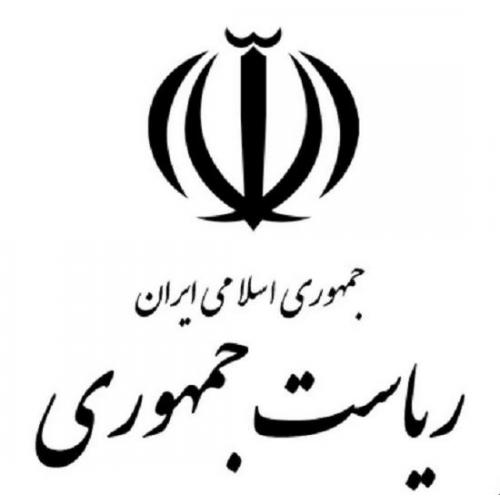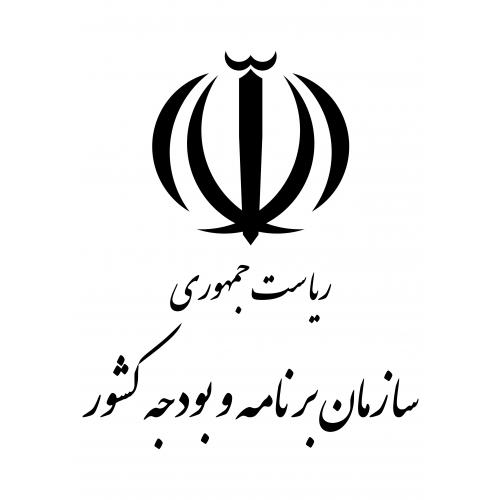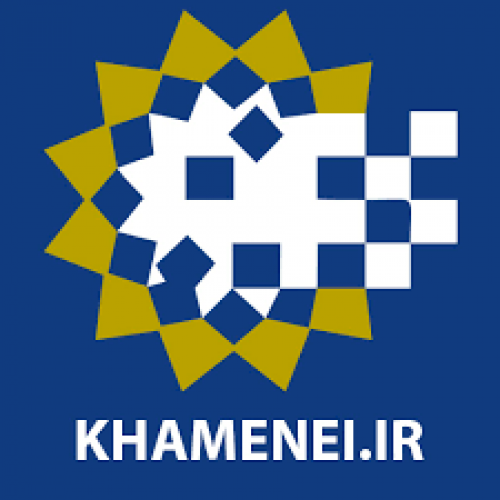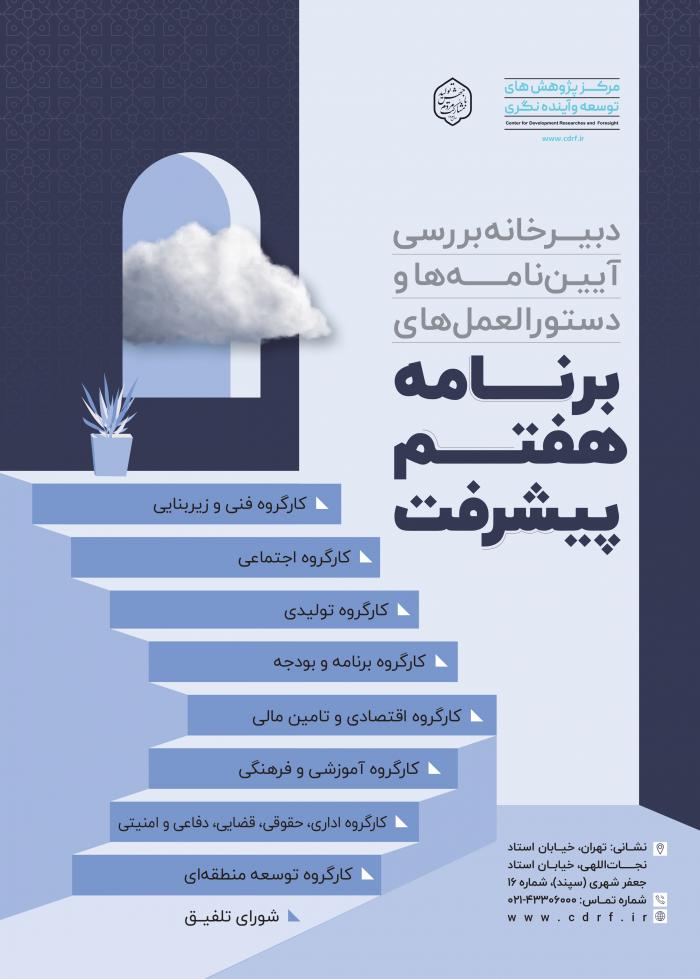
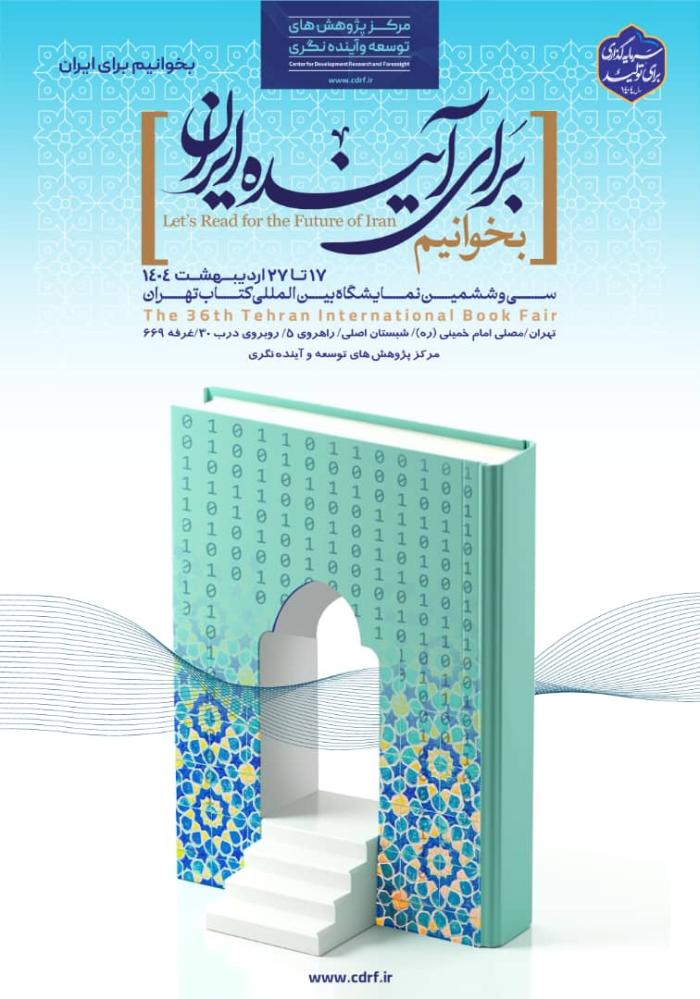
-
بررسی آییننامهها و دستورالعملهای برنامه هفتم پیشرفت
-
بررسی عوامل موثر بر افزایش تصادفات و تلفات جادهای و سوانح رانندگی و دادهکاوی تلفات انسانی
-
سازماندهی و بازآرایی فضایی آموزش عالی کشور
-
به روز رسانی سند ملی آمایش سرزمین
-
انجام مطالعات مناطق آزاد به عنوان نواحی پیشران اقتصادی کشور
-
اصلاح ساختار بودجه و پیاده سازی نظام یکپارچه مدیریت اطلاعات مالی دولت (IFMIS)
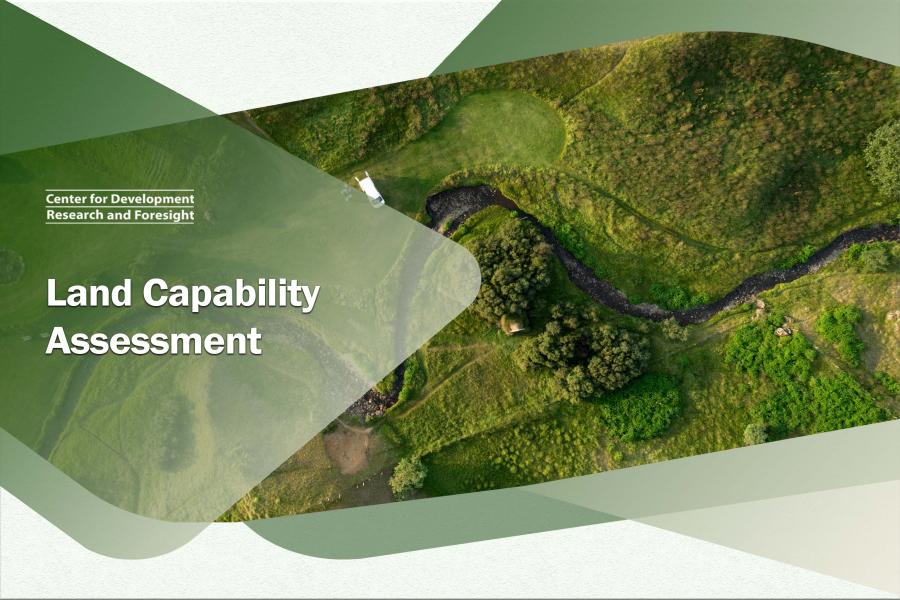
Environmental management is a crucial response to the crisis caused by rapid economic and social changes that affect the environment. Some of these challenges are global pollution, biodiversity loss, soil erosion, and urban sprawl. However, the pace of environmental monitoring, analysis, and planning has lagged behind the emergence of these problems. Environmental management is a crucial response to the crisis caused by rapid economic and social changes that affect the environment. Some of these challenges are global pollution, biodiversity loss, soil erosion, and urban sprawl. However, the pace of environmental monitoring, analysis, and planning has lagged behind the emergence of these problems. Therefore, environmental management aims to coordinate development activities to enhance human well-being and prevent further environmental degradation. A key component of environmental management and planning is land suitability assessment, which is a prerequisite for environmental planning within spatial planning. Land suitability assessment is the process of determining the natural potential of the land for human settlement and activities. Environmental planning is the process of regulating the interaction between humans, land, and human activities on the land to achieve sustainable, balanced, and optimal use of all human and spatial resources to improve the material and spiritual conditions of society over time. In other words, environmental planning means selecting the appropriate land use in a region or watershed. Thus, in land use planning, we have to consider natural and biological resources on one hand and economic resources and specific social conditions of the land on the other hand. Then, we have to choose a project that is consistent with the ecological potential of the land, economically feasible, and socially acceptable. Sustainable land management and planning projects are based on assessing ecological potential with the aim of providing a basis for development to expand in a balanced and sustainable manner. The evaluation and determination of land suitability are related to ecological resources of the land. In this study, the suitability of the land for land use development was evaluated within the framework of ecological criteria. This assessment is based on environmental characteristics such as climate (temperature range, precipitation, and wind), water resources (drinking water, irrigation water for agriculture and industry), geological resources and land potential, soil classification and suitability for agriculture, depth, fertility, drainage, and soil salinity (irregularities), elevation, slope (forest and pasture vegetation cover), type, density, protection level, and production (wildlife) diversity of species, population, habitats (and zoning of land constraints and hazards) resulting from ecological sensitivities, physical sensitivities, environmental hazards, and land use incompatibilities (for each of the mentioned uses). Moreover, the assessment of ecological potential for large-scale uses such as irrigated and rainfed agriculture, rangeland management, forestry and afforestation, aquaculture (shrimp farming), extensive and concentrated tourism development, rural development, urban development, industrial development, and conservation were evaluated based on quantitative and spatial indicators according to the model of systemic ecological criteria presented for Iran that indicate balanced land use development over the land area. Land Capability was carried out based on spatial criteria and indicators related to ecological resources for decision-making and feasibility assessment for the establishment of activities and land uses. The integrated assessment of the potential land uses also prioritized and assessed the compatibility of the assessed land uses within the framework of specific programmatic and management objectives. The results in the agricultural sector showed that the country had a land suitability of about 117,671 square kilometers (7.26% of the country) for irrigated agriculture development, with most of the suitable areas located in the northern, northeastern, northwestern, and western regions. However, a significant portion of the existing irrigated agricultural lands in the country were in an imbalanced state, with expansion occurring throughout the country’s geography, especially in the northwestern and western regions. The country also had a land suitability of about 101,084 square kilometers (6.24% of the country) for rain fed agriculture development, with a large portion of the rain fed agricultural lands in an imbalanced state. Based on the integrated map, 472 areas with different land uses were identified, of which only 12 areas had a single land use. Moreover, about 45 areas had two land uses, and the remaining areas had more than two land uses. The largest area of the integrated zone was related to the areas with the land uses PO3, TO2, and AF. The smallest area of the integrated zone was related to the areas with the land uses RA2, IA, DF, PO2, and TO2. Finally, the study analyzed the possible land suitability, balanced and imbalanced development in land use development. The potential assessment map was prepared based on land suitability models for each land use and overlaid with the existing land use map in the geographic information system. Using Boolean algebra relationships, the map and area of possible potential, balanced development, and imbalanced development for each land use were determined and analyzed by each suitability class.

